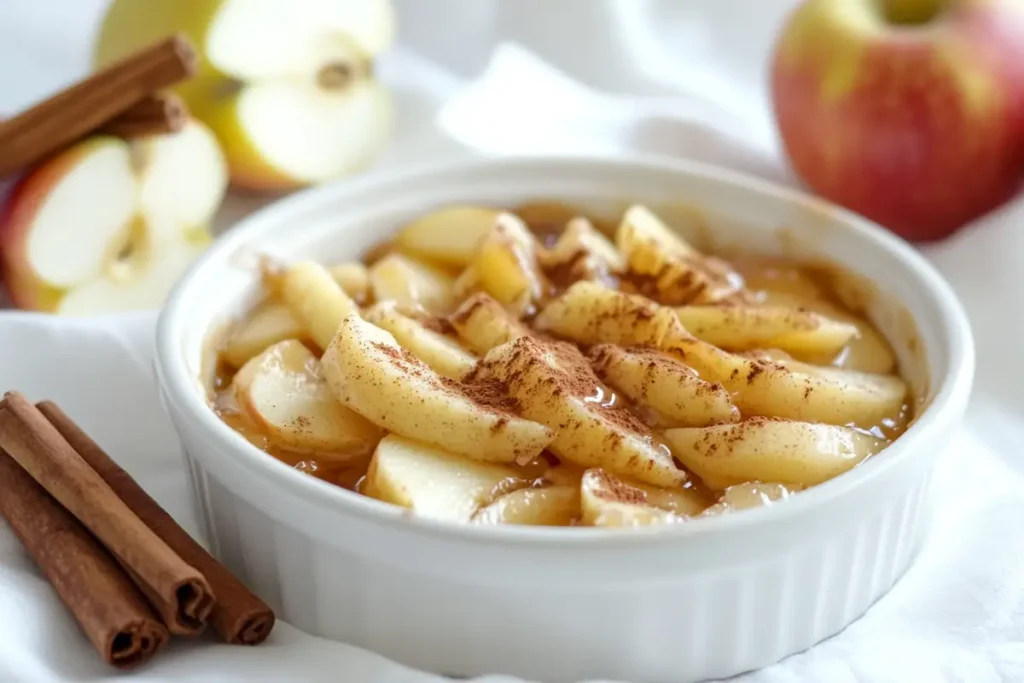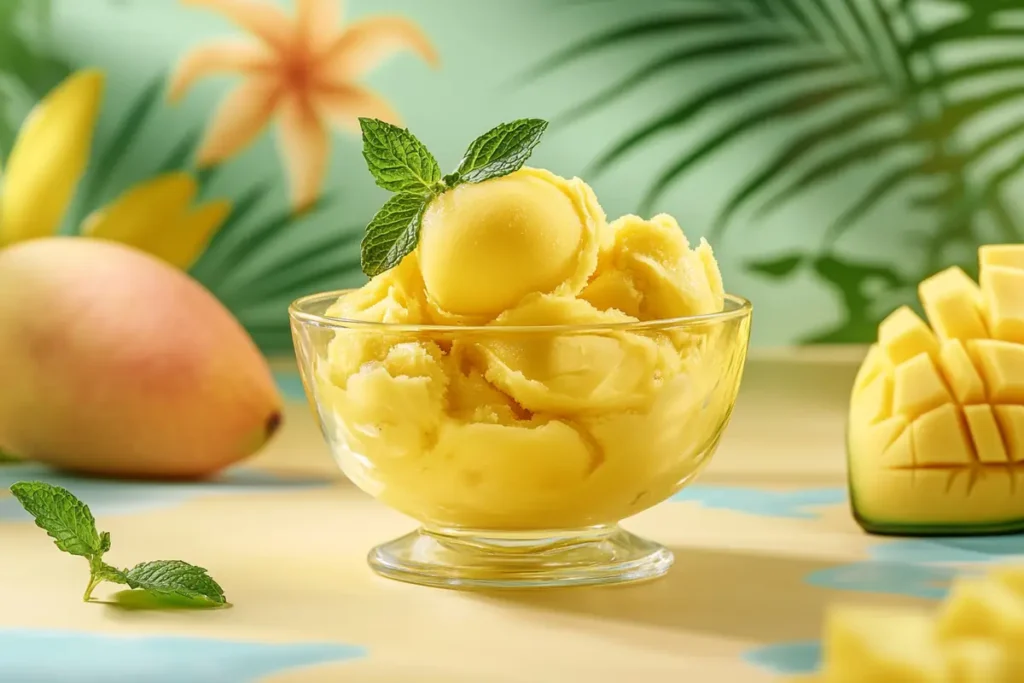Creating AIP recipes dessert options can feel like a challenge, especially when you’re eliminating common dessert staples like grains, dairy, and refined sugar. However, with the right ingredients and some creative know-how, it’s entirely possible to whip up delicious treats that are not only AIP-compliant but also bursting with flavor. This article dives deep into the world of AIP-friendly desserts, covering everything from essential ingredients to mouthwatering recipes, helpful tips, and frequently asked questions. Get ready to satisfy your sweet tooth while sticking to your autoimmune protocol journey!
Understanding the Autoimmune Protocol (AIP) Diet
What is the AIP Diet?
The Autoimmune Protocol (AIP) diet is a specialized version of the paleo diet, specifically designed to help individuals manage autoimmune conditions. This protocol eliminates inflammatory foods, such as grains, legumes, dairy, and processed sugars, to give the gut a chance to heal. After this elimination phase, certain foods are slowly reintroduced to test tolerance and identify triggers.
By focusing on nutrient-dense, anti-inflammatory foods, the AIP diet supports the body in reducing inflammation and repairing damaged tissues. But let’s face it—cutting out so many food groups can feel daunting, especially when it comes to desserts.
Why Desserts Matter on the AIP Diet
It’s no secret that desserts often bring comfort, joy, and a touch of indulgence to our meals. For individuals following the AIP diet, the importance of desserts goes beyond mere indulgence. These sweet treats:
- Help maintain dietary compliance by satisfying cravings.
- Prevent feelings of restriction, which can lead to burnout.
- Provide a creative outlet for exploring AIP-friendly ingredients.
However, crafting an AIP-compliant dessert is no piece of cake (pun intended). With careful substitutions and innovative techniques, you can enjoy sweets without compromising your dietary goals.
What Foods Are Eliminated in AIP Desserts?
To adhere to the AIP guidelines, certain ingredients are off-limits during the elimination phase:
- Grains and flours derived from wheat, corn, and oats.
- Dairy products like milk, cream, and butter.
- Eggs, including whites and yolks, which can be inflammatory for some.
- Processed sugars and artificial sweeteners.
- Seeds, nuts, and legumes.
Though these restrictions might seem limiting, they pave the way for experimenting with nutrient-dense substitutes like coconut flour, tigernut flour, and natural sweeteners such as honey.
The Goal of AIP Desserts
Incorporating desserts into the AIP diet isn’t just about having a treat; it’s about creating balance and making the diet sustainable. The recipes in this article focus on using ingredients that nourish the body, promote healing, and taste absolutely scrumptious. Whether you’re in the mood for cookies, frozen treats, or cakes, there’s something here for everyone.
Essential Ingredients for AIP Desserts
AIP-Approved Sweeteners
When it comes to creating AIP recipes dessert, sweeteners play a crucial role. While refined sugar is off the table, there are natural options that add sweetness without triggering inflammation. These sweeteners not only comply with the AIP diet but also enhance the flavors of your treats:
- Honey: This natural sweetener is packed with antioxidants and a mild sweetness that complements most AIP desserts.
- Maple Syrup: A versatile choice, it adds depth to baked goods and frozen treats alike.
- Dates: These nutrient-dense fruits can be blended into desserts for a caramel-like sweetness.
Moderation is key, as even natural sweeteners should be consumed in limited amounts to maintain the anti-inflammatory goals of the diet.
Grain and Gluten Substitutes
Without traditional flours, it’s easy to wonder how desserts can have the right texture and consistency. Thankfully, there are excellent AIP-friendly flour substitutes:
- Coconut Flour: High in fiber and subtly sweet, coconut flour works beautifully in recipes like cakes and cookies.
- Tigernut Flour: Despite its name, tigernut is a tuber, making it a perfect AIP option. Its nutty flavor is ideal for pie crusts and muffins.
- Cassava Flour: This versatile flour, derived from the cassava root, mimics the texture of wheat flour in recipes like cookies and pancakes.
Each flour behaves differently, so following AIP-compliant recipes is essential to ensure success in your baking adventures.
Dairy Alternatives
Replacing dairy in desserts can be tricky, but with these options, you won’t even miss it:
- Coconut Milk: A staple in AIP desserts, it serves as an excellent base for ice creams, mousses, and creamy fillings.
- Coconut Cream: Thicker than coconut milk, this is perfect for making whipped toppings or rich desserts.
- Avocado: Surprisingly versatile, avocados can add creaminess to puddings and mousse recipes.
These dairy substitutes not only align with AIP guidelines but also provide healthy fats that support overall health.
Egg Replacements
Eggs are often essential in traditional desserts, but on the AIP diet, they’re avoided during the elimination phase. Luckily, there are several replacements that can deliver similar results:
- Gelatin Egg: Made by whisking gelatin with water, this is a reliable substitute for binding ingredients in baked goods.
- Fruit Purees: Mashed bananas or unsweetened applesauce can provide moisture and sweetness in recipes like cakes and muffins.
- Arrowroot Starch: A fantastic thickener that works well in custards and pie fillings.
With these substitutes, you can maintain the texture and structure of your favorite desserts while staying compliant with the autoimmune protocol.
Flavor Enhancers
No dessert is complete without a little extra flavor. While certain spices like nutmeg and cardamom are excluded from the AIP diet, there are plenty of alternatives:
- Cinnamon: Adds warmth and depth to baked goods and fruit-based treats.
- Vanilla Bean: A natural way to enhance the sweetness and aroma of desserts.
- Carob Powder: A caffeine-free alternative to cocoa powder, perfect for creating “chocolatey” treats.
These ingredients prove that AIP desserts don’t have to sacrifice flavor, making them enjoyable for everyone—not just those on the diet.
Popular AIP Dessert Recipes
Fruit-Based Desserts

Fruits are naturally sweet and nutrient-dense, making them an excellent base for AIP recipes dessert. Here are some standout options:
Apple Crisp
Enjoy a comforting classic with AIP apple crisp, where tender baked apples meet a crisp, golden topping crafted from coconut flour and tigernut flour. To enhance the flavor, drizzle warm maple syrup over the top and sprinkle it with a pinch of cinnamon. This simple combination creates a dessert that is not only delicious but also perfect for indulging while staying AIP-compliant. For added flair, serve it warm with a dollop of coconut cream or a side of freshly prepared berry compote.
Berry Compote
For a simple yet delightful dessert, simmer fresh or frozen mixed berries with a small drizzle of honey until they soften. As the berries release their natural juices, the mixture thickens, creating a flavorful compote bursting with vibrant color. Once it’s ready, spoon the warm compote over creamy coconut yogurt, and enjoy a satisfying treat that’s both refreshing and visually appealing. Additionally, you can garnish it with a sprinkle of shredded coconut or fresh mint leaves to elevate the presentation.
Baked Pears
A minimalist yet elegant dessert, baked pears are seasoned with cinnamon and lightly sweetened with maple syrup. The natural sweetness of the fruit shines in every bite.
AIP Cookies and Bars

Craving a cookie? These AIP-friendly options deliver all the flavor without the allergens.
Carob Date Bars
These no-bake bars combine carob powder, dates, and coconut oil for a chewy, chocolate-like treat. They’re quick to prepare and perfect for satisfying a sweet tooth on busy days.
Pumpkin Pie Bars
With a rich pumpkin filling and a flaky coconut flour crust, these bars are a seasonal favorite. Perfect for holidays or when you’re in the mood for cozy fall flavors.
Cassava Sugar Cookies
Soft and chewy, these cassava sugar cookies delight with their light texture and natural sweetness. Using cassava flour as the base, they achieve the perfect balance of structure and tenderness. Sweetened with honey, they bring just the right amount of indulgence without breaking AIP guidelines. Decorate these cookies with AIP-approved toppings, such as a sprinkle of shredded coconut or a drizzle of smooth carob, to add flavor and flair. Whether for a celebration or a simple treat, these cookies are versatile and satisfying for anyone following the AIP diet.
Cakes and Muffins
AIP desserts wouldn’t be complete without cakes and muffins for special occasions—or just because!
Lemon Banana Cake
This moist cake combines the brightness of lemon with the natural sweetness of ripe bananas. Topped with a simple coconut cream frosting, it’s both refreshing and satisfying.
Carob “Chocolate” Cake
This indulgent cake uses carob powder instead of cocoa, offering a rich flavor without the caffeine. The cake is layered with coconut cream for a decadent finish.
Blueberry Muffins
Bursting with fresh blueberries, these muffins are made with a mix of tigernut and cassava flours. They’re soft, fluffy, and ideal for breakfast or dessert.
Frozen Treats

For a cool and refreshing twist, these frozen desserts will hit the spot:
Strawberry Mousse
Made with fresh strawberries, coconut cream, and a touch of honey, this light mousse is whipped to perfection and chilled for a refreshing summer treat.
Coconut Ice Cream
This creamy, dairy-free ice cream comes together effortlessly using coconut milk, a hint of vanilla, and a touch of maple syrup. To make it even more appealing, serve it plain for a refreshing treat, or enhance its flavor profile by adding a drizzle of warm berry compote. Furthermore, you can sprinkle it with shredded coconut or pair it with fresh fruit slices for extra texture and taste. Whether enjoyed on its own or as part of a larger dessert, this ice cream offers a versatile and satisfying option for those following the AIP diet.
Mango Sorbet
A tropical delight, mango sorbet is created by blending frozen mango chunks with a splash of coconut milk. It’s smooth, tangy, and incredibly refreshing.
Each of these recipes showcases the creativity and variety possible within the AIP diet, proving that desserts can be both delicious and healing.
Tips for Successful AIP Baking
Understanding AIP Baking Challenges
Baking within the constraints of the AIP diet can feel like a juggling act. Without the usual staples like eggs, dairy, and grains, achieving the perfect texture, flavor, and structure in desserts requires creativity and patience. Some common challenges include:
- Crumbly Textures: Without gluten, baked goods can lack elasticity, leading to a crumbly finish.
- Dense Results: The absence of eggs and traditional flours can sometimes make cakes and muffins denser than expected.
- Flavor Adjustments: Using unfamiliar ingredients like tigernut flour or carob powder might require you to adjust to new tastes.
To overcome these obstacles, precise measurements and following trusted recipes are crucial. Experimentation can also help you learn which combinations of ingredients work best.
Essential AIP Baking Tools
Equipping your kitchen with the right tools can make or break your baking success. Here’s what you need:
- Silicone Baking Mats: Perfect for preventing sticking when working with alternative flours.
- High-Speed Blender or Food Processor: Ideal for blending dates, fruit purees, and other AIP-friendly ingredients.
- Measuring Cups and Kitchen Scale: Precision is key when working with delicate recipes.
- Springform Pans and Muffin Tins: Help create consistent shapes for cakes, bars, and muffins.
Investing in these tools ensures your desserts turn out beautifully, even when using unconventional ingredients.
Storage and Shelf-Life of AIP Desserts
AIP desserts often use fresh, perishable ingredients, meaning proper storage is essential to maintain their quality and flavor. Here are a few tips:
- Refrigeration: Desserts like coconut ice cream and mousses should be stored in airtight containers and refrigerated. They typically last up to 3–4 days.
- Freezing: Cookies, bars, and muffins freeze well. Wrap them individually in parchment paper before placing them in freezer-safe bags to avoid freezer burn.
- Room Temperature: For dry items like cookies, storing them in a sealed container at room temperature for up to 2 days works well, but ensure the climate isn’t too humid.
Knowing how to store your AIP treats ensures you’ll always have something delicious on hand without worrying about spoilage.
Frequently Asked Questions (FAQs)
Can I use almond flour in AIP desserts?
No, almond flour is excluded during the elimination phase of the AIP diet because almonds are considered a nut, which can trigger inflammation in some individuals. However, almond flour may be reintroduced during the reintroduction phase if tolerated. In the meantime, use tigernut flour, cassava flour, or coconut flour as excellent alternatives.
Are there any store-bought AIP desserts available?
Yes, some brands offer AIP-compliant treats, but they’re not always easy to find. Look for snacks labeled paleo or AIP-specific and carefully read ingredient lists to ensure they meet AIP standards. Homemade desserts are often the best choice to ensure full compliance and avoid hidden additives.
How can I make my AIP desserts sweeter without refined sugar?
AIP desserts can be sweetened naturally using honey, maple syrup, or dates. For additional sweetness, incorporate naturally sweet fruits like bananas, mangoes, or apples into your recipes. These options not only add sweetness but also boost the nutrient content of your desserts.
What can I use as a substitute for eggs in AIP baking?
Eggs are excluded during the elimination phase of AIP, but substitutes like gelatin eggs, unsweetened applesauce, or mashed bananas work well in most dessert recipes. Each substitute adds a unique texture, so choose based on your recipe’s needs.
Is carob a safe alternative to chocolate on the AIP diet?
Yes, carob powder is a fantastic alternative to cocoa powder for those following the AIP diet. Carob is naturally caffeine-free, making it an AIP-compliant choice that mimics the rich flavor of chocolate in desserts.
How can I ensure my AIP desserts have the right texture?
Achieving the perfect texture without traditional ingredients requires attention to detail. Use a combination of AIP-friendly flours like cassava and tigernut, ensure accurate measurements, and don’t skip recommended binders like gelatin eggs or arrowroot starch. Baking at the right temperature and allowing desserts to cool fully can also improve texture.
Print
Coconut Mango Pudding
- Total Time: 15 minutes
- Yield: 4 servings 1x
Description
This creamy and refreshing coconut mango pudding is the perfect AIP-friendly dessert. Made with wholesome, nutrient-dense ingredients, it’s free of dairy, grains, and refined sugar. Bursting with tropical flavors, this treat will delight your taste buds while supporting your health journey.
Ingredients
- 1 cup ripe mango (fresh or frozen, thawed)
- 1 cup full-fat coconut milk
- 2 tablespoons coconut cream (optional for extra richness)
- 1 tablespoon raw honey (optional, adjust for sweetness)
- 1 teaspoon gelatin powder (AIP-compliant)
- 2 tablespoons water (for blooming gelatin)
- Pinch of sea salt
Instructions
- Prepare the Gelatin
- In a small bowl, sprinkle the gelatin over 2 tablespoons of water. Let it bloom for 5 minutes.
- Blend the Mango
- Add the mango, coconut milk, coconut cream, honey, and sea salt to a blender. Blend until smooth and creamy.
- Heat the Mixture
- Pour the mango-coconut mixture into a saucepan. Heat gently over medium-low heat until warm (do not boil).
- Incorporate Gelatin
- Add the bloomed gelatin to the warm mixture. Stir until fully dissolved and incorporated.
- Set the Pudding
- Pour the mixture into small ramekins or dessert cups. Let it cool slightly, then refrigerate for at least 3-4 hours, or until set.
- Serve and Enjoy
- Garnish with fresh mango slices or a sprinkle of shredded coconut, if desired. Serve chilled.
Notes
- Ensure the gelatin is AIP-compliant, as some brands may contain additives.
- For added texture, you can layer the pudding with mashed mango or pureed berries.
- The pudding can be stored in the refrigerator for up to 3 days.
- Prep Time: 10 minutes
- Cook Time: 5 minutes
- Category: Dessert
- Method: No-bake
- Cuisine: AIP, Tropical
Nutrition
- Serving Size: 1/2 cup
- Calories: 180
- Sugar: 10g
- Sodium: 30mg
- Fat: 14g
- Saturated Fat: 12g
- Unsaturated Fat: 2g
- Trans Fat: 0g
- Carbohydrates: 14g
- Fiber: 2g
- Protein: 2g
- Cholesterol: 0mg
Keywords: AIP dessert, Coconut Mango Pudding, Autoimmune Protocol

